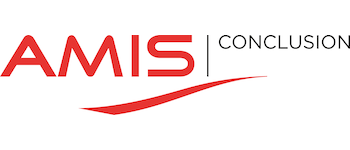Blockchain leases more efficient, less risk and better compliance
A blockchain solution that contributes to increasing efficiency in the rental contract market. In order to protect landlords of homes (private or housing corporations) against misbehaving tenants.
Client
AMIS Conclusion

Market
Financial Services
Date published
19 januari 2022

To protect landlords of homes (private or housing corporations) against misbehaving tenants, the ROZ contract model "Housing" is used. A landlord has the tenant(s) sign this contract on paper, after which it is recorded in the administration. Because contracts are not digitally recorded in a (decentralized) register, repeat offenders (tenants who repeatedly misbehave) cannot be recognized before signing the contract, which puts the landlord at unnecessary risk. People can also rent several (private) homes, which is not permitted by law.
A digital rental contract in the blockchain
AMIS Conclusion has created a blockchain application in a pilot that handles rental contracts. The basis is the ROZ contract model as a smart contract (a digital representation of the contract in the form of computer program code) that runs on the blockchain (a distributed and cryptographically secured network of computer nodes). The blockchain makes it possible to offer a digital version of the truth in a distributed manner, i.e. to a large number of customers. This concerns all stored data, whereby all rules surrounding the contract are validated by all parties in the network via the smart contract.
This solution contributes to increasing efficiency in the rental contract market. By applying blockchain, manual signing can be replaced by digital signing. It is also possible to automatically implement contract rules for rent increases and to settle claims. Insight into payment behavior and damage history of tenants falls under the rules of the GDPR.
Landlords can draw up a contract via an internet portal. The tenant(s) can view and digitally sign the contract via the same portal. The smart contract ensures the implementation of the clauses regarding annual rent increases and imposed fines. Through the portal, the landlord can report incidents with evidence. The tenant can view the contract and make payments via the portal.
In order to arrive at a contract settlement with blockchain, we have gone through the following steps.
Step 1: feasibility study
Our research shows that the ROZ contracts can run on a blockchain as legal smart contracts. To this end, we worked closely with a law firm that contributed the necessary domain knowledge. Based on this research, we determined which data may be stored on the blockchain and which data will remain outside it. After this, we looked at the technical feasibility of blockchain in this process. There it turned out that the added value is mainly in the clauses regarding financial settlement and fines for damages. These can be fully automated with this.
Step 2: Selecting and setting up the platform
For this solution, AMIS Conclusion has opted for a 'permissioned' blockchain platform using Hyperledger Fabric. This solution can handle confidential data well and enable extensive smart contracts. The open-source platform Hyperledger is also very scalable, provides a high degree of security and guarantees privacy. AMIS Conclusion has set up a working environment between three (virtual) housing corporations that are part of the same network.
Step 3: Developing a smart contract
As an extension of the platform, AMIS Conclusion has developed a smart contract based on the clauses in the ROZ contract model "Residential Property". In addition to creating new contracts, the platform also offers the possibility of signing by multiple parties, the rent can be automatically increased annually, incidents can be registered and penalty clauses can be activated. Landlords and tenants can consult information about the contracts they are involved in and can check third parties (e.g. other housing associations) whether a certain person is known as a high-risk/repeat offender or is already renting a property elsewhere.
Step 4: use of the contracts portal
For the actual presentation of the solution, AMIS Conclusion has developed a contract portal (web application) with which the functionalities of smart contract can actually be called via an API. In this application, landlords can, among other things, draw up their contracts and report incidents, and tenants can digitally sign and view contracts.
The result
With this pilot, AMIS Conclusion has shown that contract handling via a blockchain application is possible. Use teaches us that this solution makes the course of the process clearer for all parties. Concluding the contract and executing the conditions is faster. There is also an unambiguous and non-changeable recording of events surrounding the contract, such as an increase in the rent, reporting damage and changing the term. There is one place where the agreement can be found without having to set up a large central system. This solution can also be easily linked to existing systems for finance, CRM and maintenance.

Robbrecht van Amerongen
